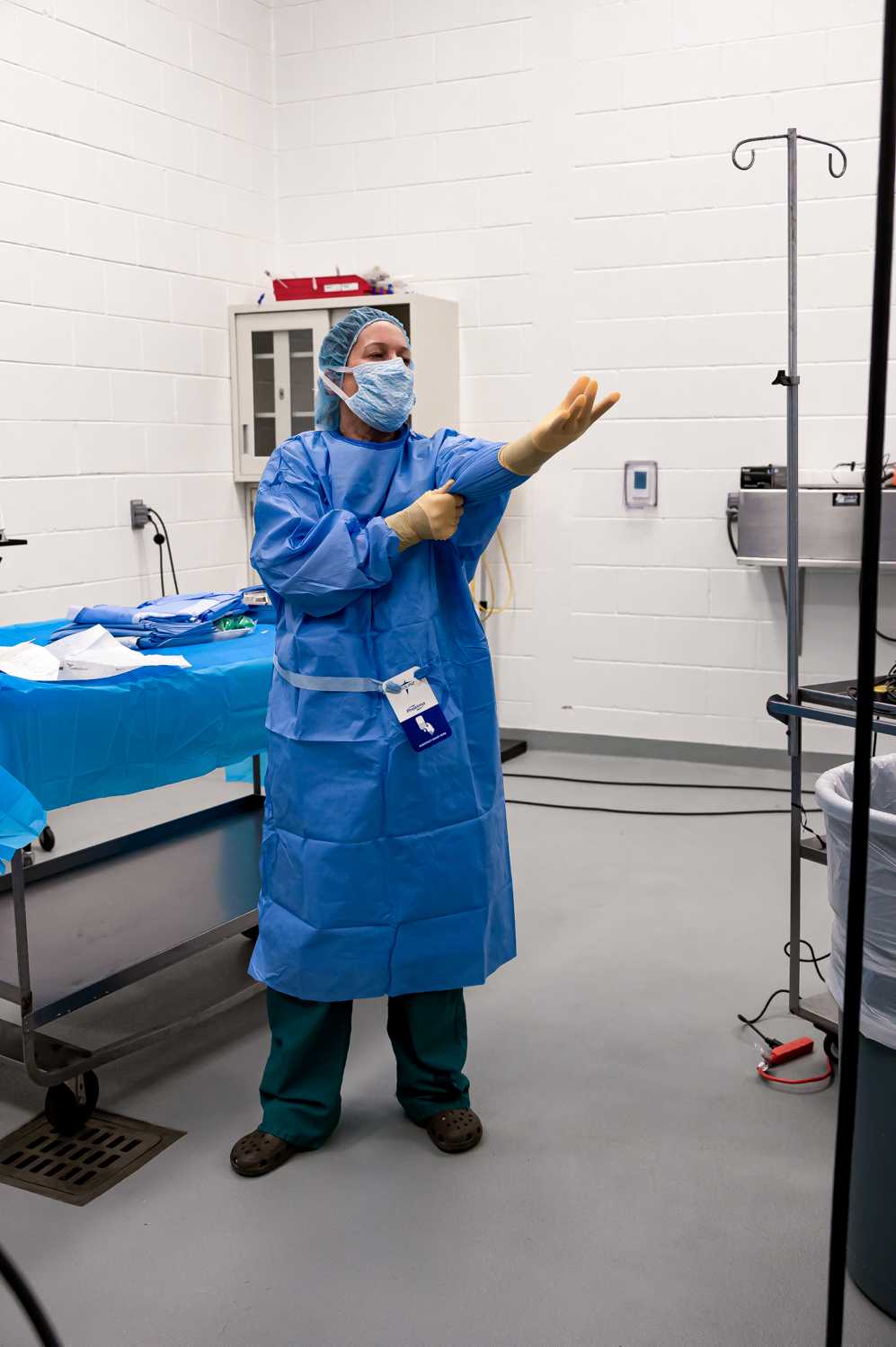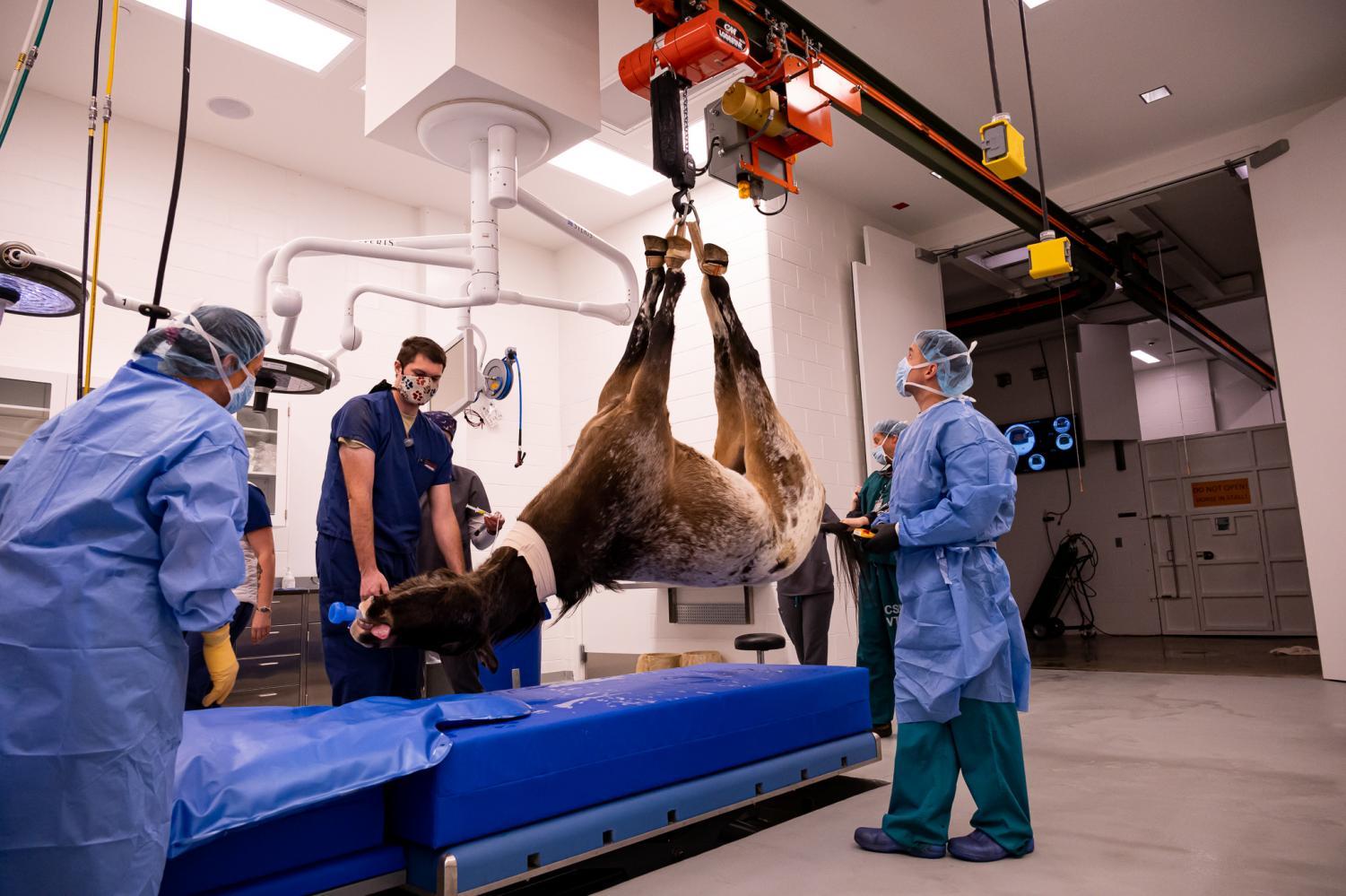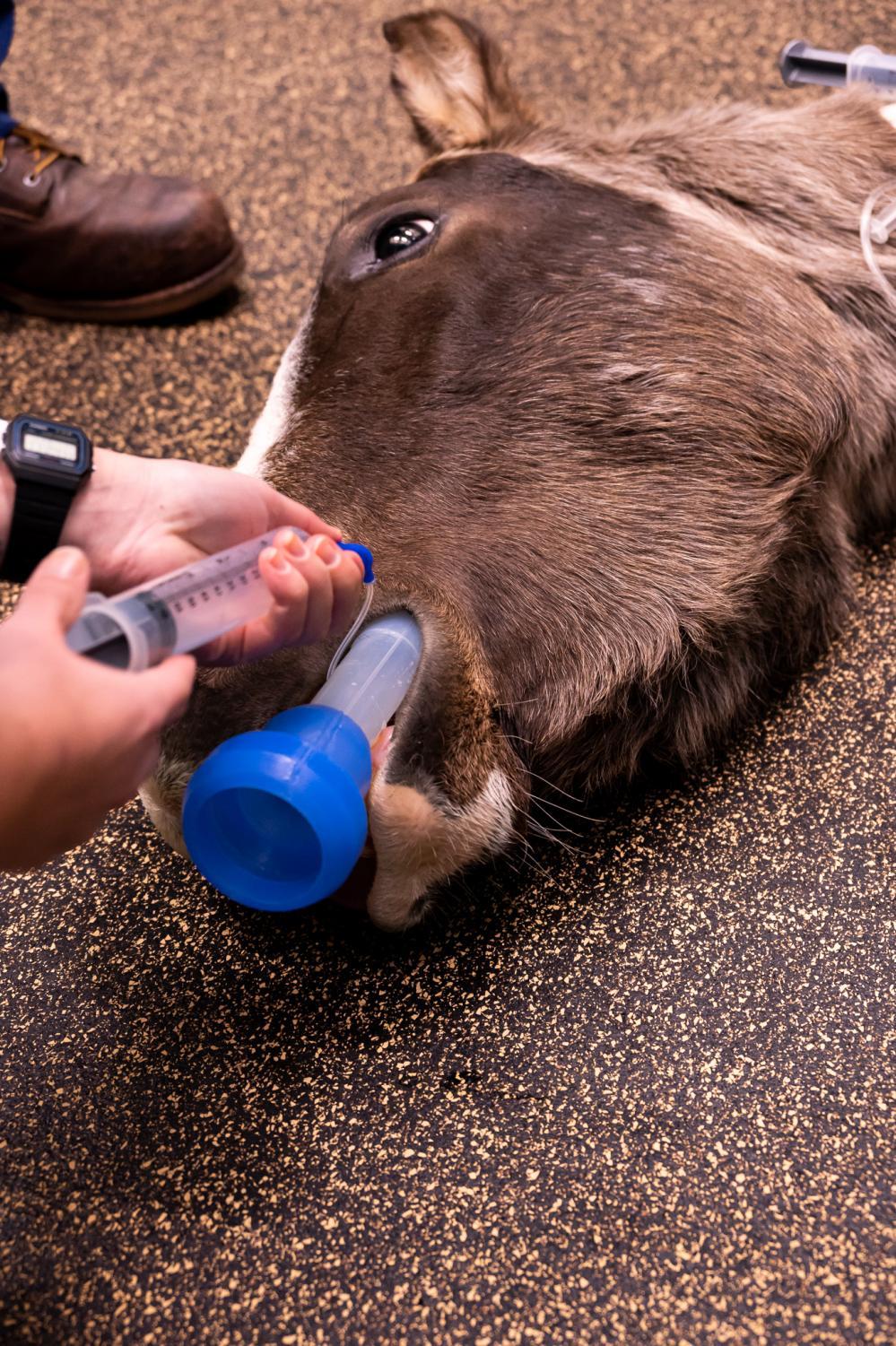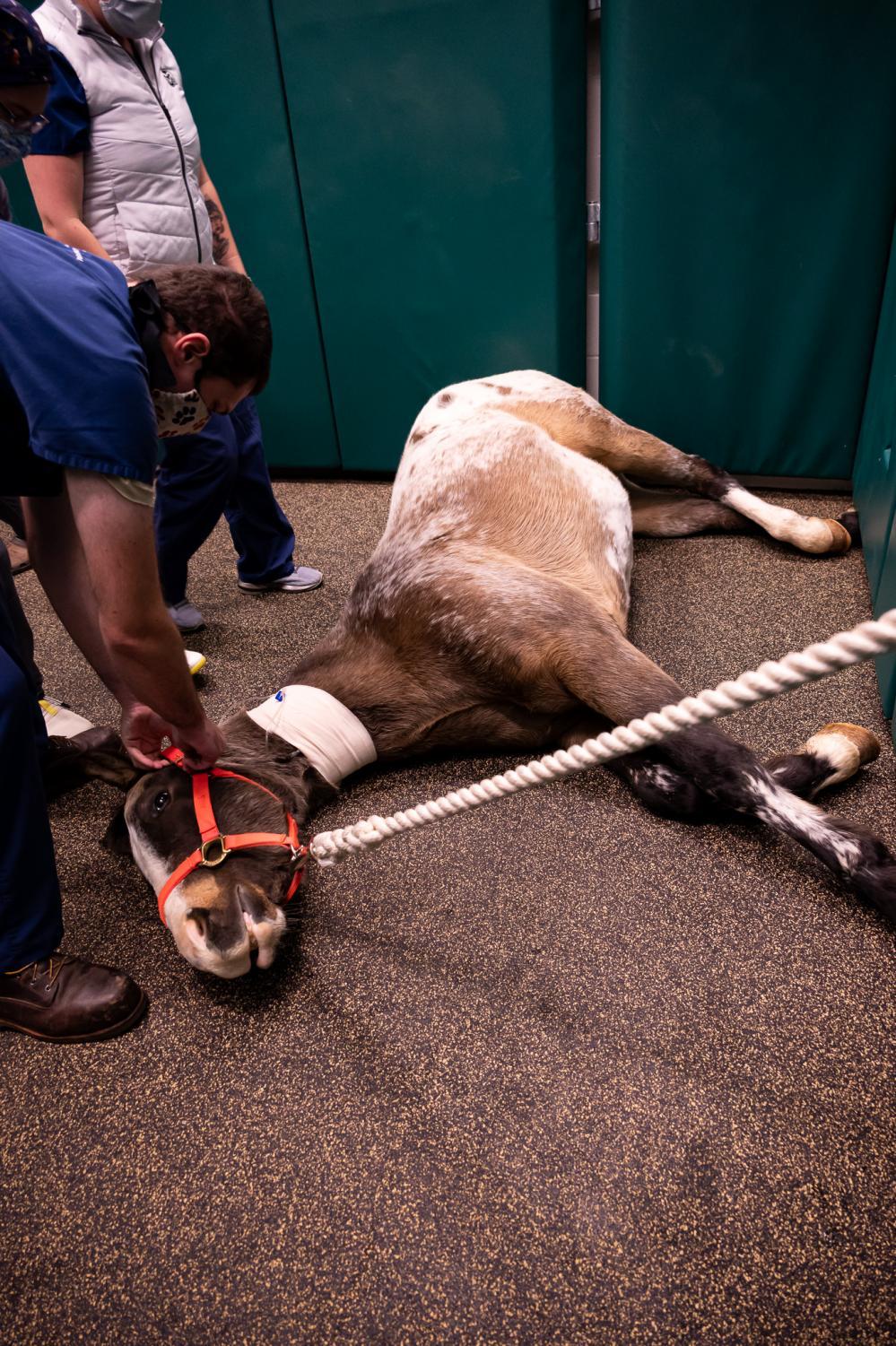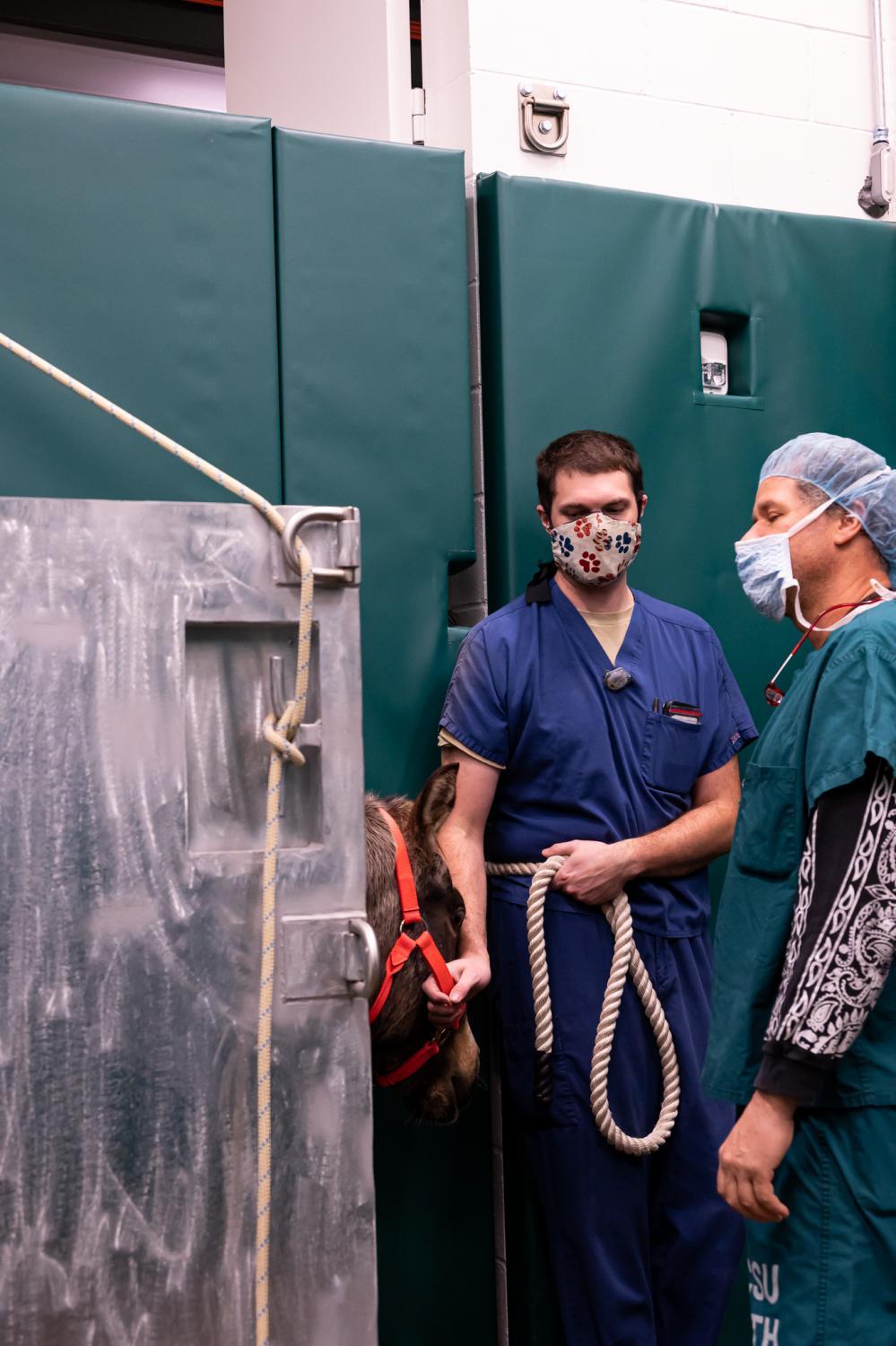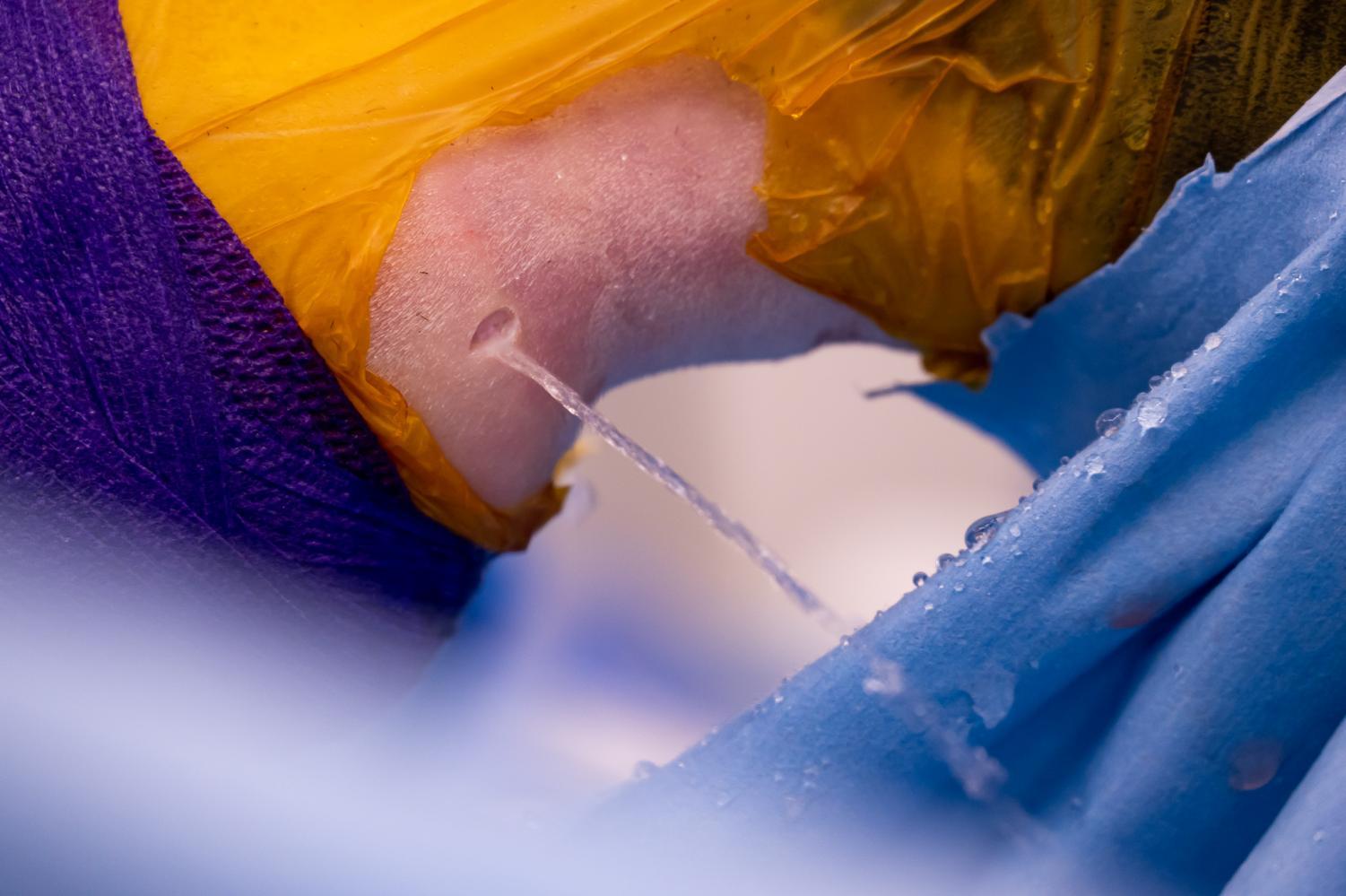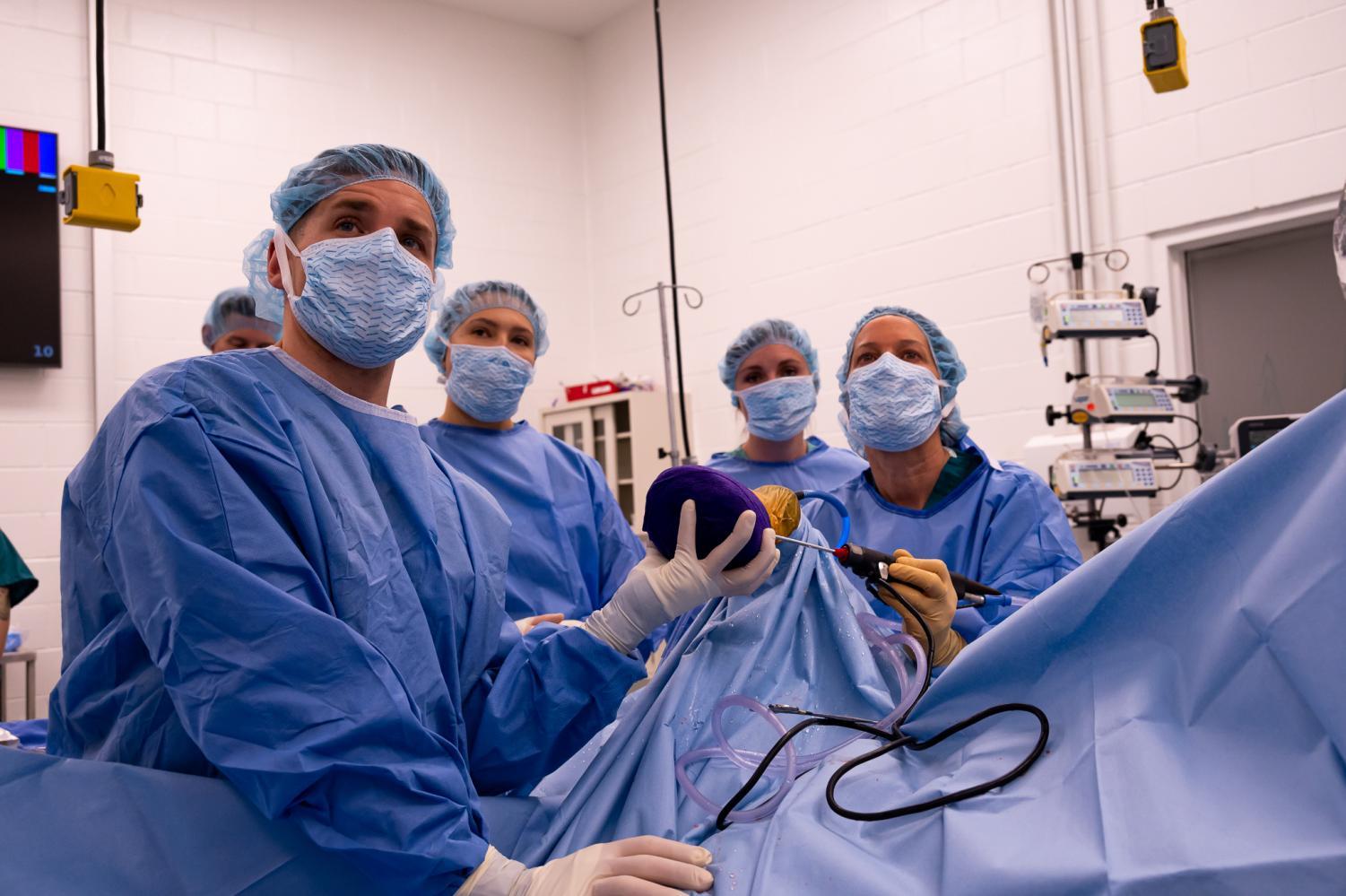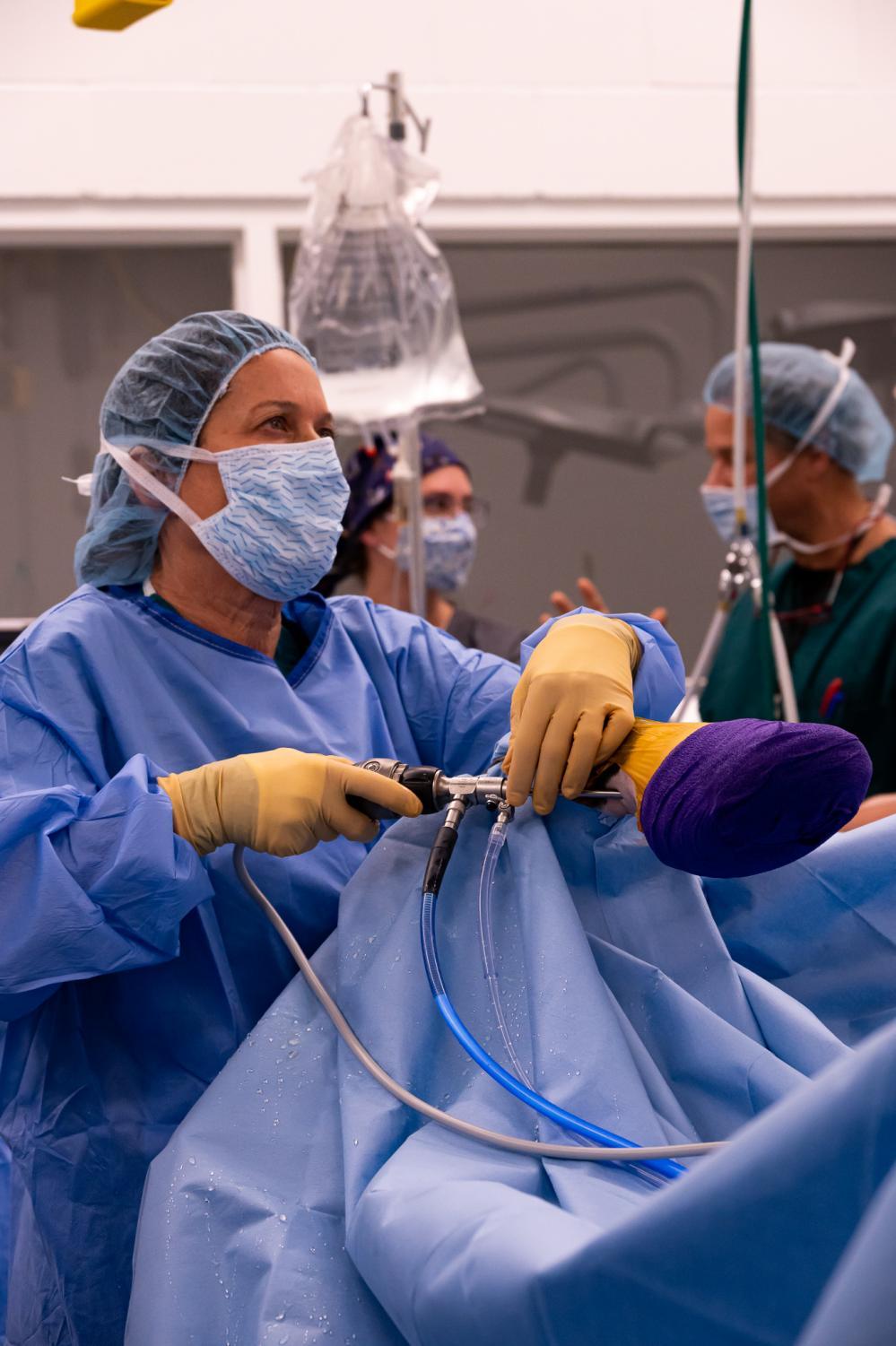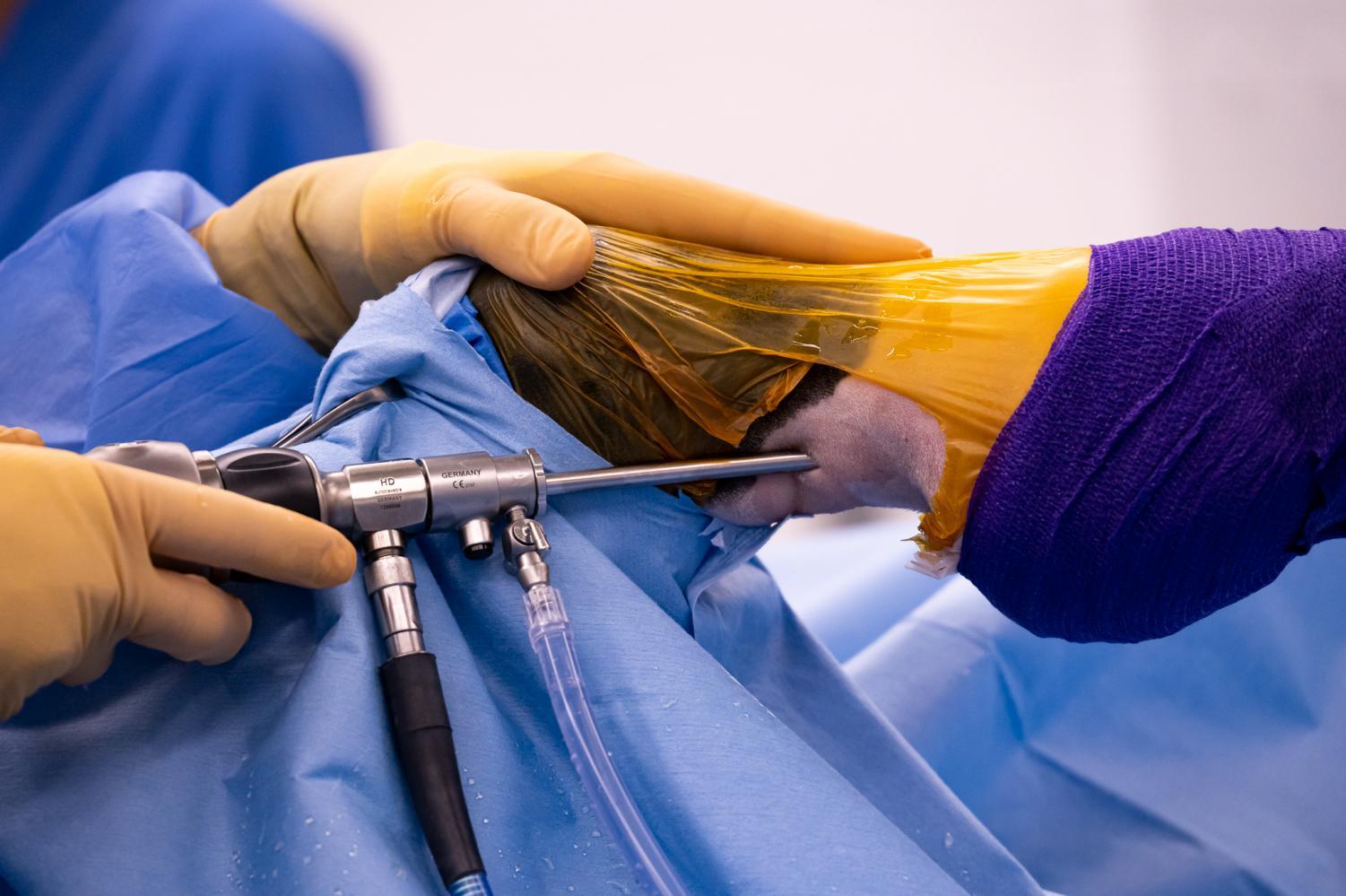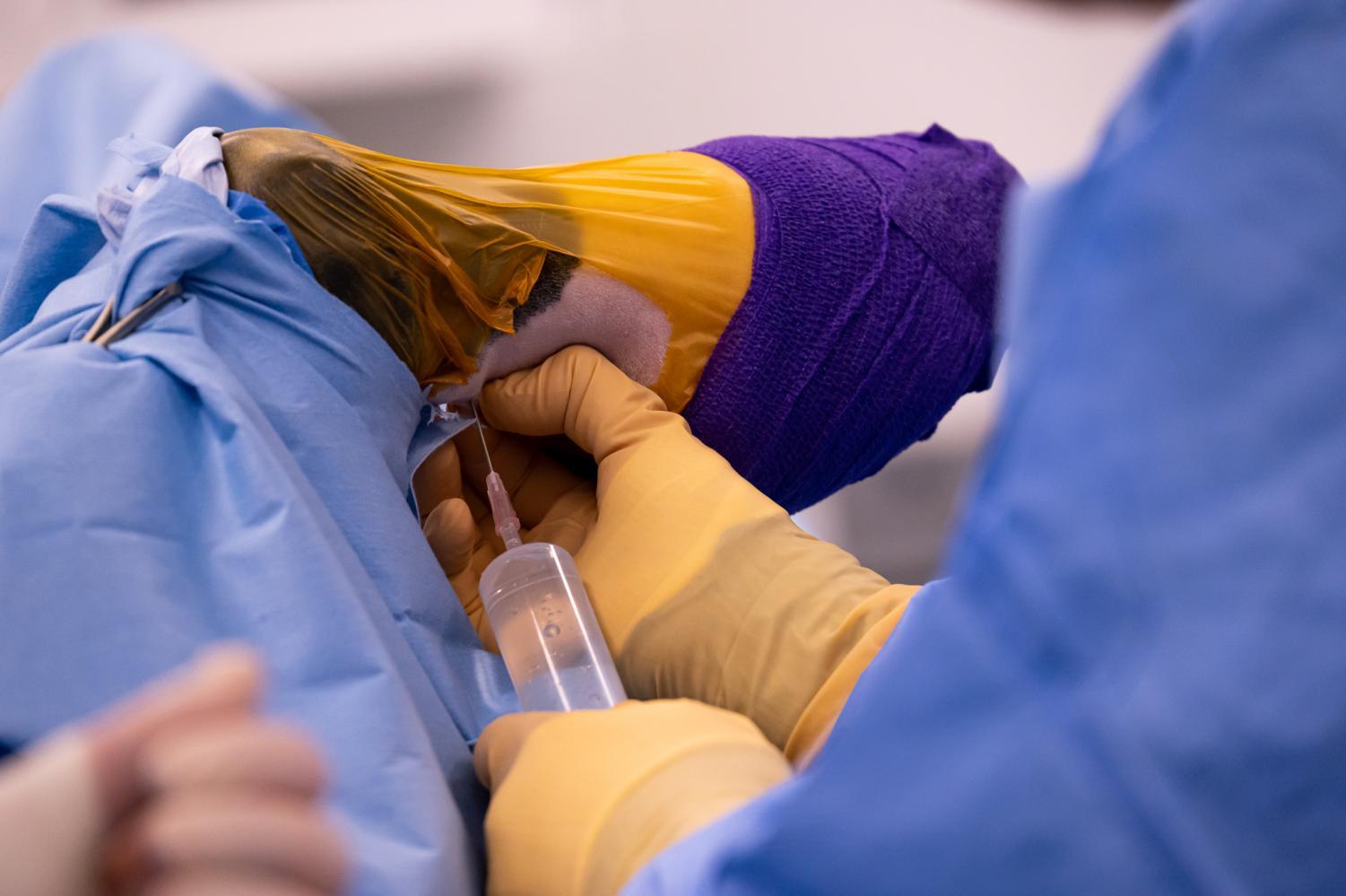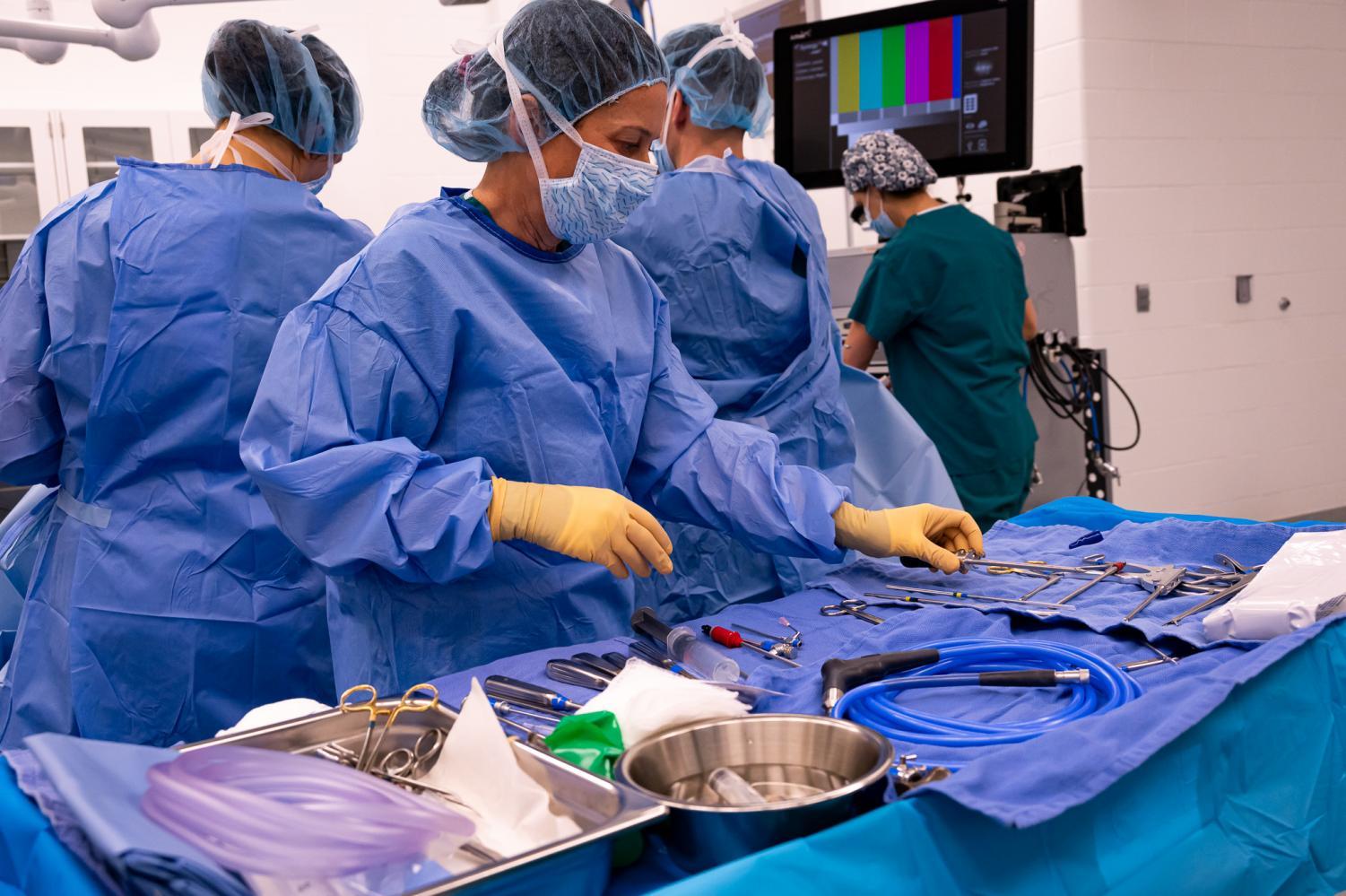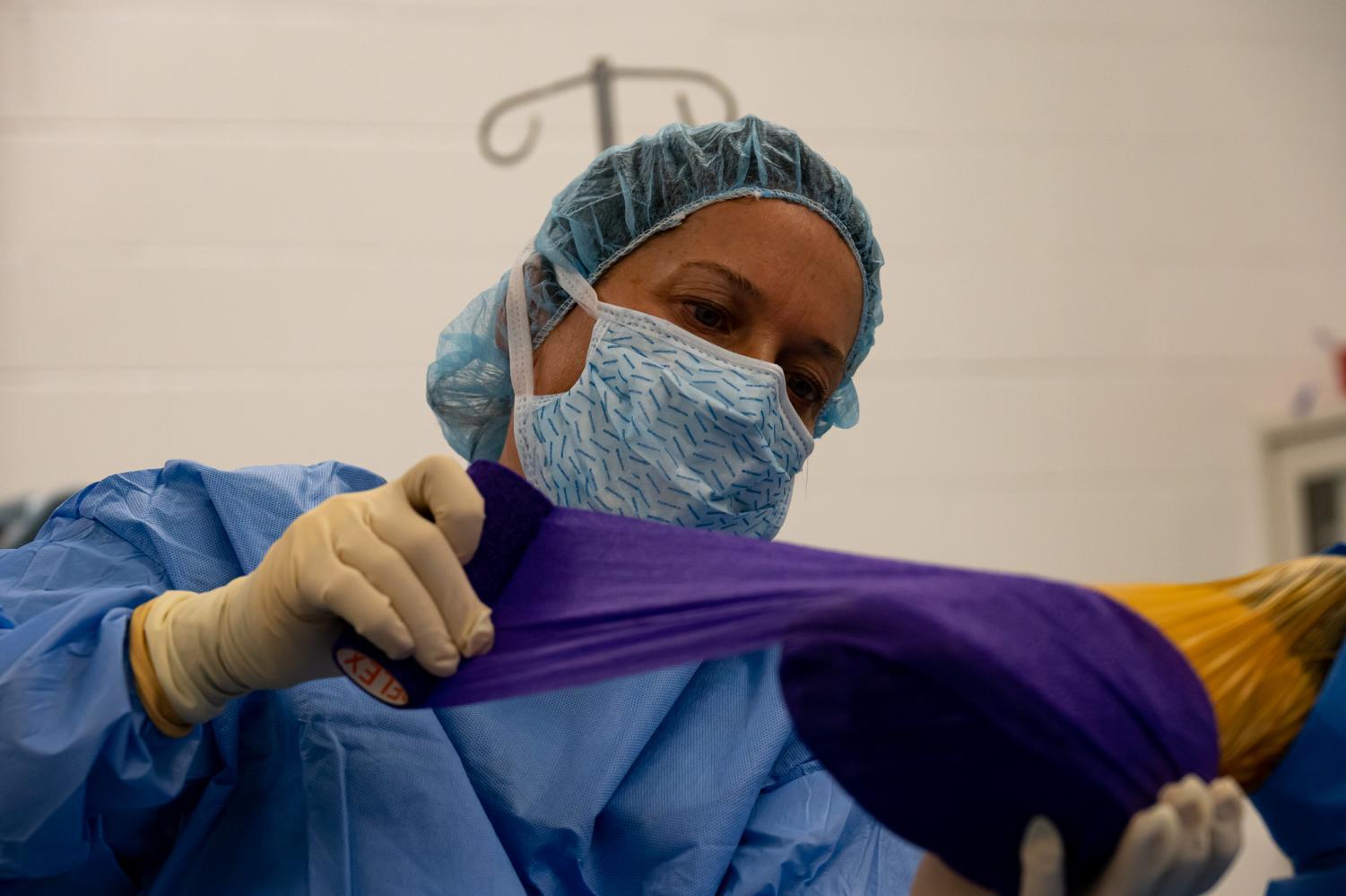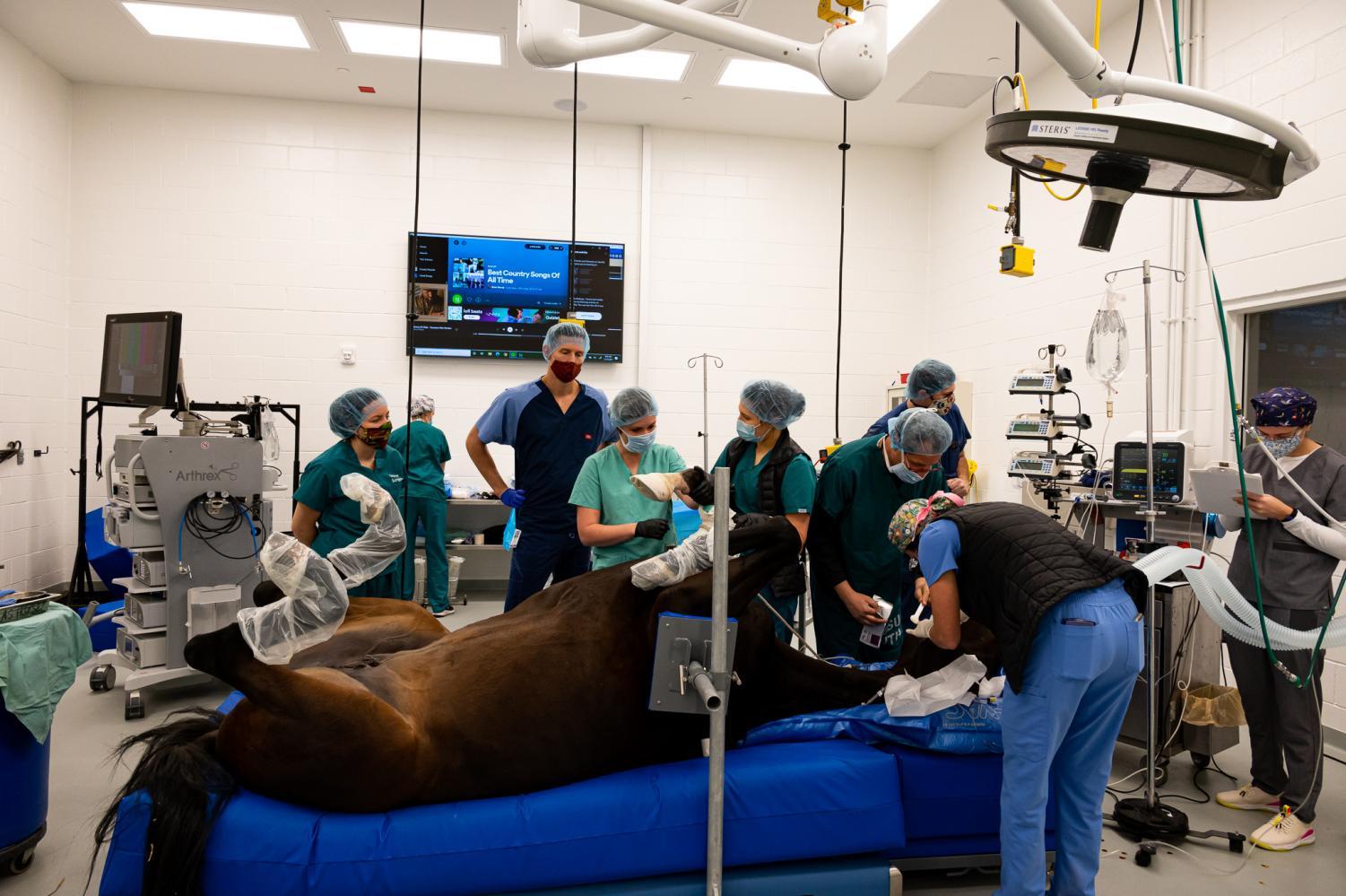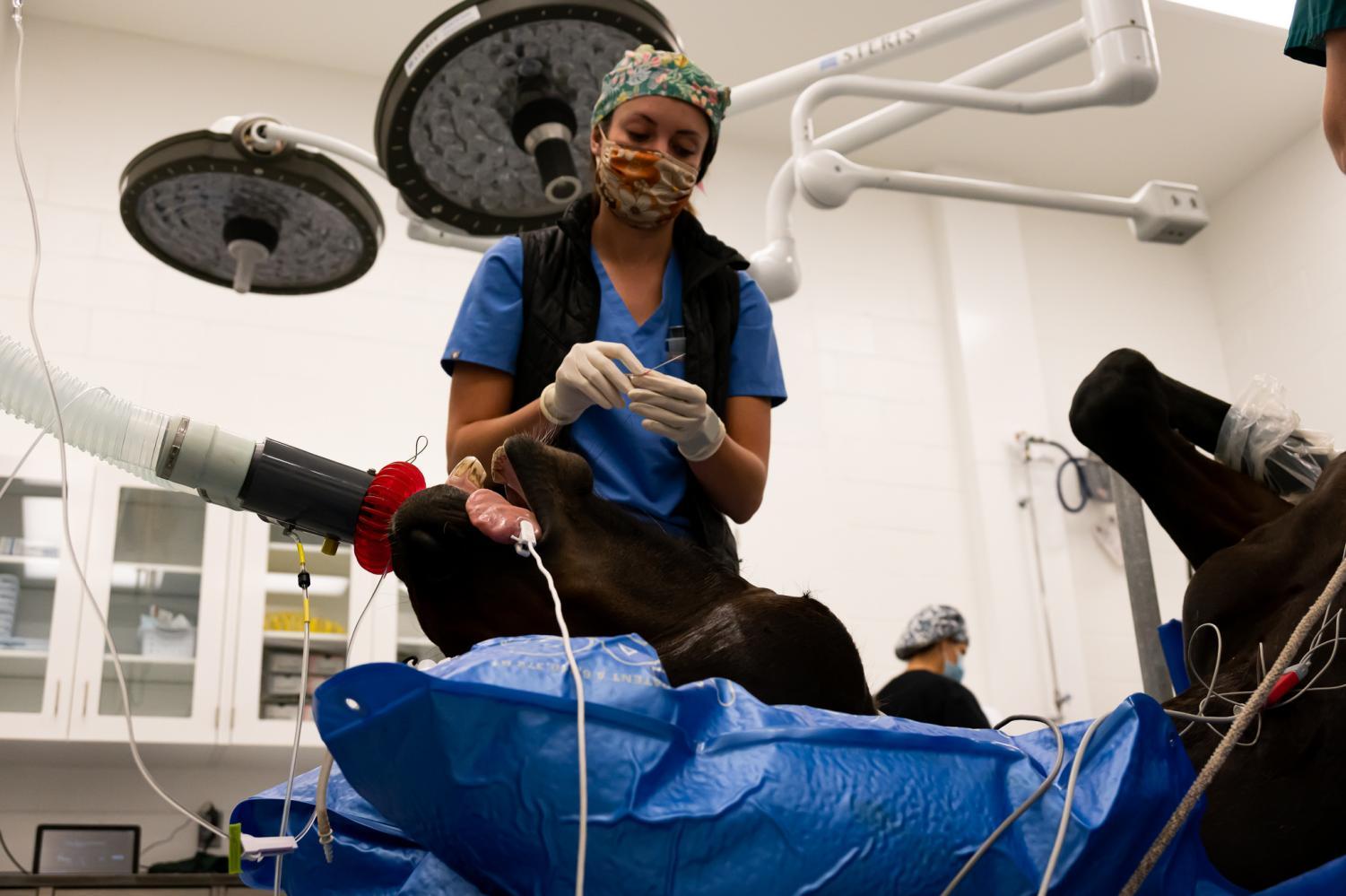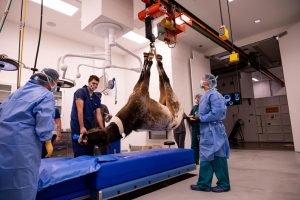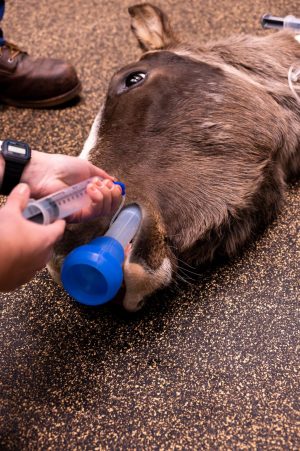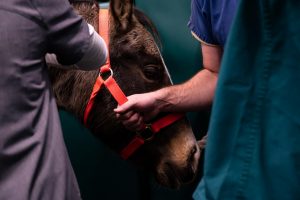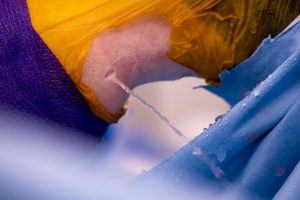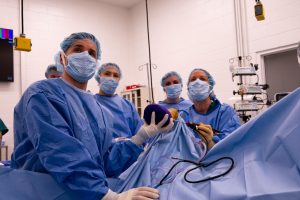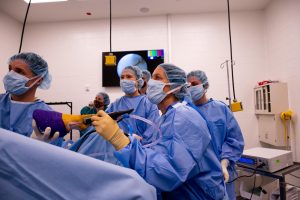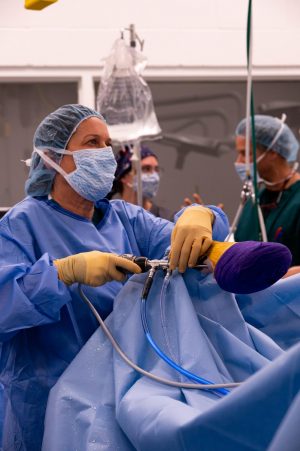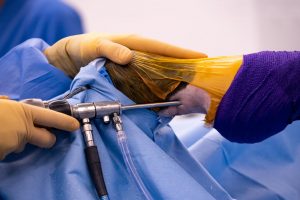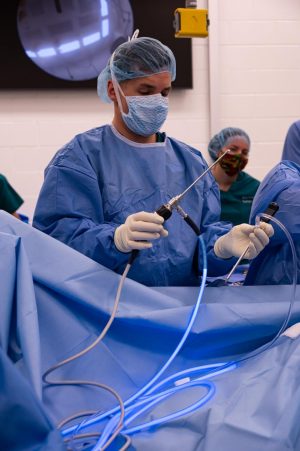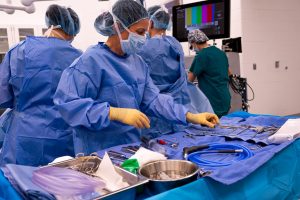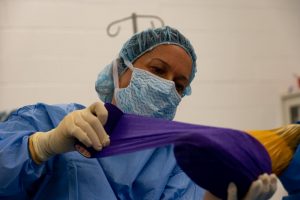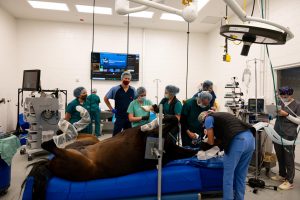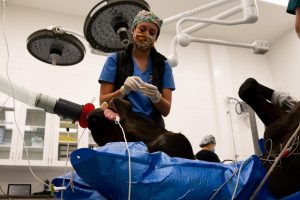Equine emergencies
Johnson Family Equine Hospital gives students hands on surgical experience.
January 26, 2022
The Johnson Family Equine Hospital, which opened in September 2021 thanks to a $10 million gift by namesakes Helen and Arthur Johnson, provides high-quality care for horses and a state-of-the-art learning opportunity for Colorado State University students.
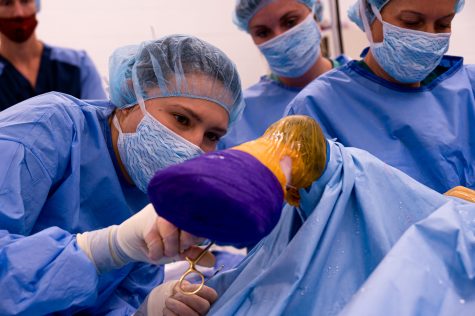
Surgeries performed Dec. 11 were led by Dr. Laurie Goodrich and assisted by a team of doctors, nurses, anesthesiologists and veterinary students.
Ad
The first patient was Carmen, who was in surgery for fluid buildup caused by a tendon tear.
“We know that this horse had increased fluid in that little space because of the tear, and we confirmed that on MRI first,” Goodrich said.
Brooke Hursh, a fourth-year veterinary student at Colorado State University, scrubbed into surgery for the first time and said the hands-on experience with a patient added depth to her studies.
“This is the first surgery I’ve ever scrubbed into,” Hursh said. “It has helped me see a lot of the anatomy learned in the classroom.”

Collegian | Milo Gladstein
Surgical instruments lay on a table at the Johnson Family Equine Hospital Dec. 11.
Procedure
The team used various surgical instruments, such as scalpels and a suction tube, to remove excess fluid, and a camera fed live video to a TV screen so Goodrich could see what was happening as she worked.
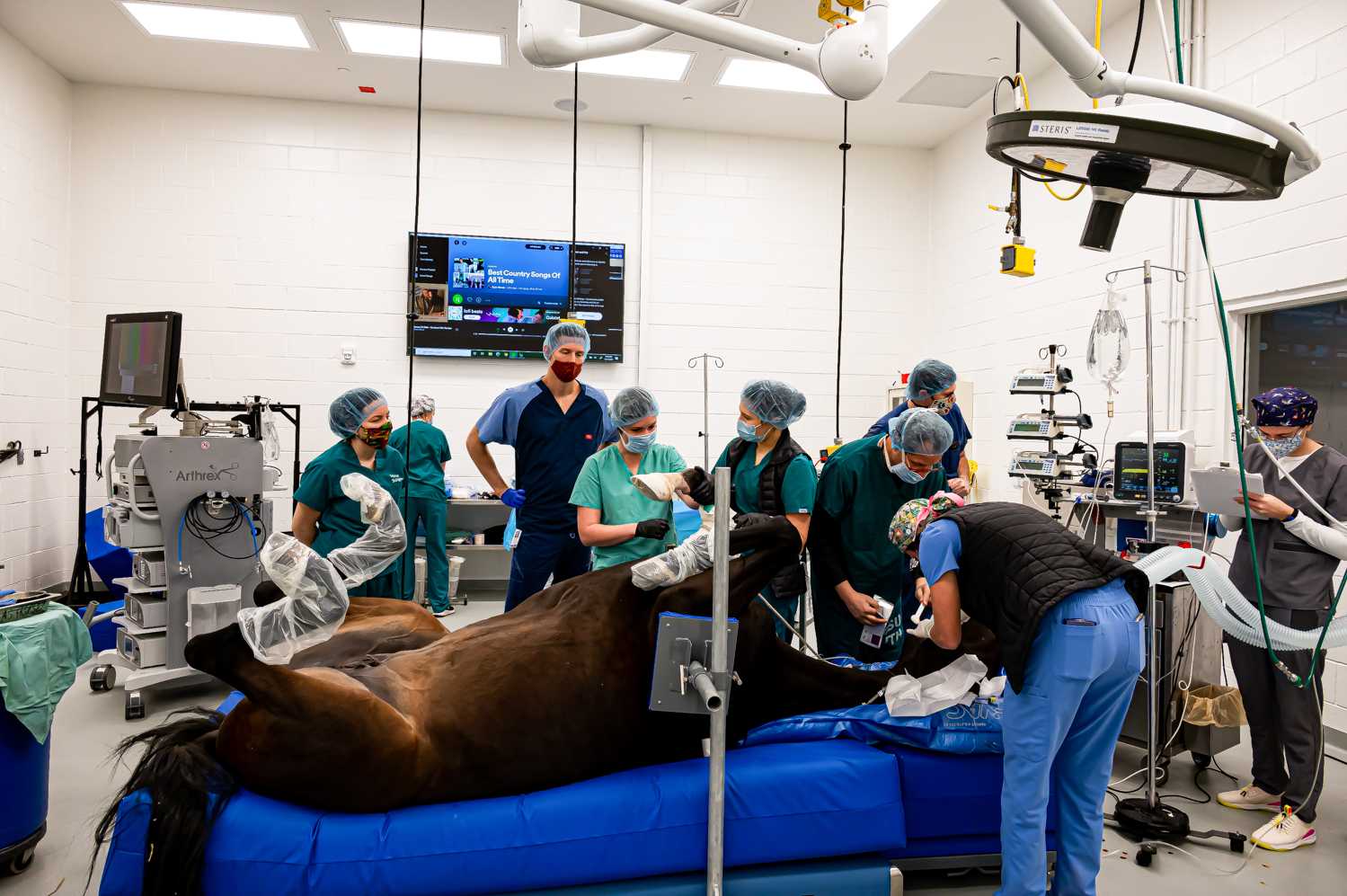
“Horses have a tendon that goes down deep into the back of their hoof,” Goodrich said. “It’s the main tendon that supports the horse’s legs and causes the flexion ability of them to flex their legs, and that tendon is the most important one. … The navicular bursa is bordered by a tendon and the navicular bone and has fluid within it.”
Ad
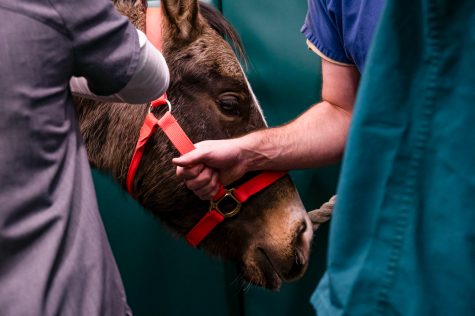
(Collegian | Milo Gladstein)
The second patient, named Finn, was put under anesthesia and prepared for surgery. The team used many straps and harnesses to attach Finn to a crane to move him into the operating room for his surgery.
For Goodrich, the most difficult part of the job is attempting perfection.
“You want everything to go perfectly, and it doesn’t always go perfectly,” Goodrich said. “You always want the cutting-edge best for your patients, so I think when it’s not at 100% — it might be 90% — that’s, in our minds, not good enough.”

